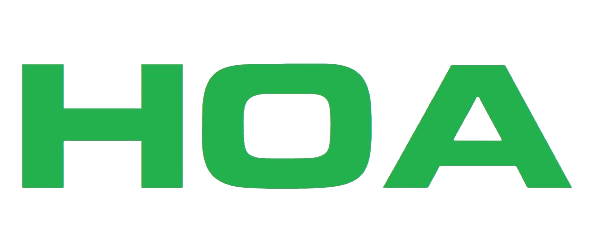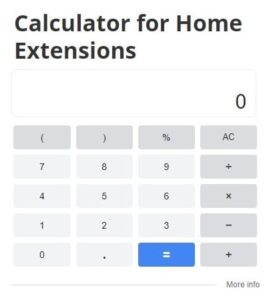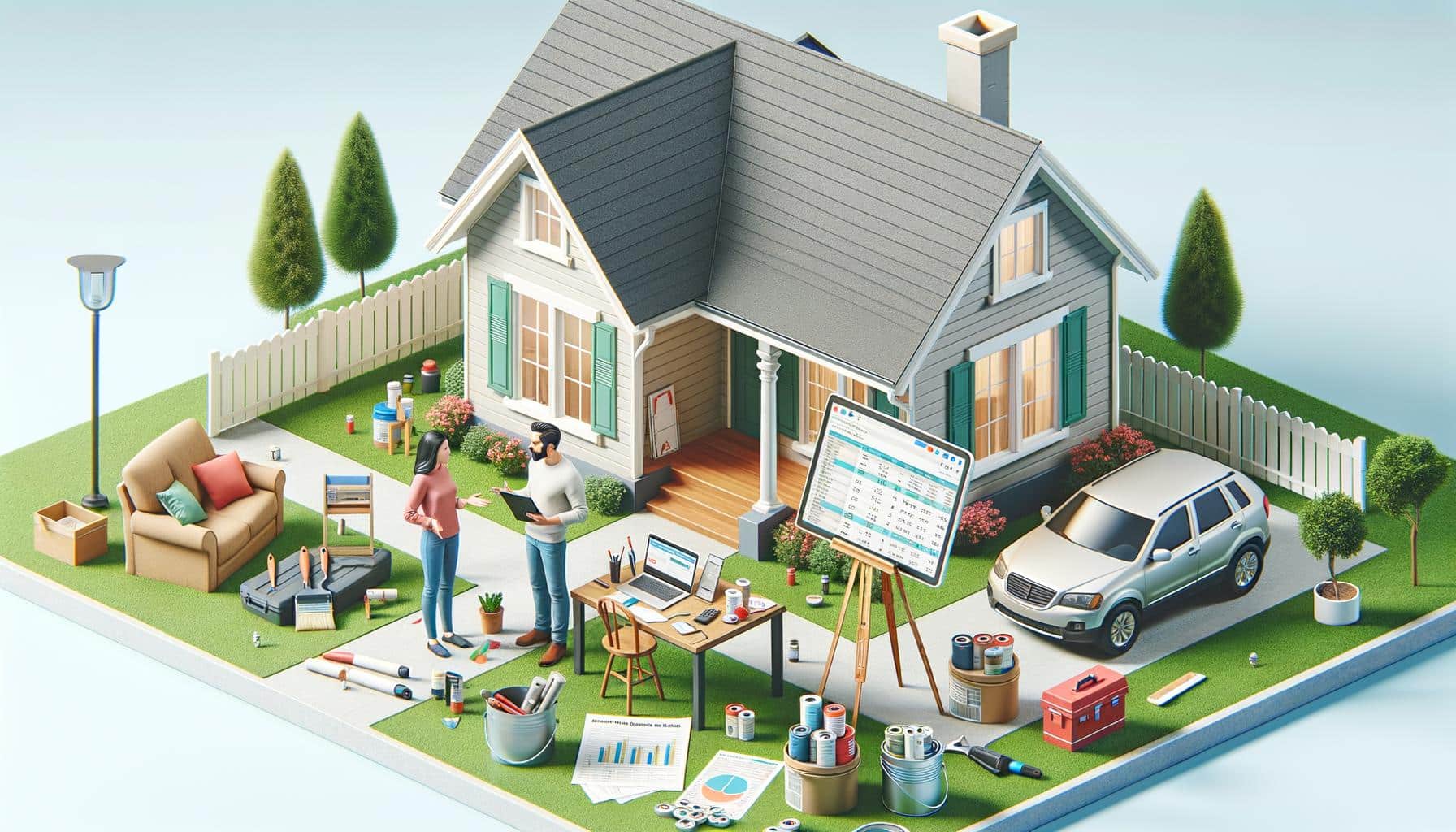
At Home Owners Association, we often get asked: “How much should you spend on home maintenance?” It’s a crucial question for every homeowner.
Proper budgeting for home upkeep can prevent costly surprises and maintain your property’s value. In this post, we’ll explore effective strategies to help you plan for home maintenance expenses.
How Much Should You Budget Using the 1% Rule?
Understanding the 1% Rule
The 1% rule serves as a popular guideline for estimating annual home maintenance costs. This method suggests setting aside 1% of your home’s current market value each year for maintenance and repairs. For example, if your Melbourne property is valued at $800,000, you should budget $8,000 annually for upkeep.
Calculating Your Budget
To apply this rule, first determine your home’s current market value. You can use recent appraisals, consult local real estate agents, or check online property valuation tools. Once you have this figure, simply calculate 1% of it.

For example:
Home value: $800,000
Annual maintenance budget: $800,000 x 0.01 = $8,000
This translates to setting aside about $667 per month for home maintenance.
Advantages of the 1% Rule
The 1% rule offers several benefits:
- Simplicity: It’s straightforward and easy to remember.
- Clear target: It provides a specific goal for budgeting purposes.
- Prevention of underestimation: It helps avoid underestimating maintenance costs.
For many homeowners in Melbourne, this method offers a reasonable baseline for planning.
Limitations to Consider
While useful, the 1% rule isn’t perfect. It doesn’t account for factors such as:
-
Your home’s age
-
The property’s condition
-
Location-specific issues in Melbourne
Older homes or those in areas with extreme weather might require more than 1%. Additionally, this rule might overestimate costs for newer or well-maintained properties.
Adjusting for Your Situation
You should modify the percentage based on your home’s specific needs. For instance, if you own an older Victorian in Melbourne’s inner suburbs, you might want to budget closer to 2-3% of your home’s value. Conversely, a newer apartment in the CBD might require less than 1%.
The 1% rule serves as a starting point, but you should adjust based on your property’s unique characteristics and maintenance history. This approach helps ensure you’re financially prepared for both routine upkeep and unexpected repairs, keeping your Melbourne home in top condition year-round.
Now that we’ve explored the 1% rule and its applications, let’s examine the various factors that can influence your home maintenance budget beyond this basic guideline.
What Impacts Your Home Maintenance Budget?
Age and Condition of Your Home
The age of your home significantly influences maintenance costs. Older homes in Melbourne, especially those built before 1980, often need more frequent repairs and updates. A Victorian-era home in Fitzroy might require specialized care for its period features, potentially doubling your maintenance budget compared to a newer property.
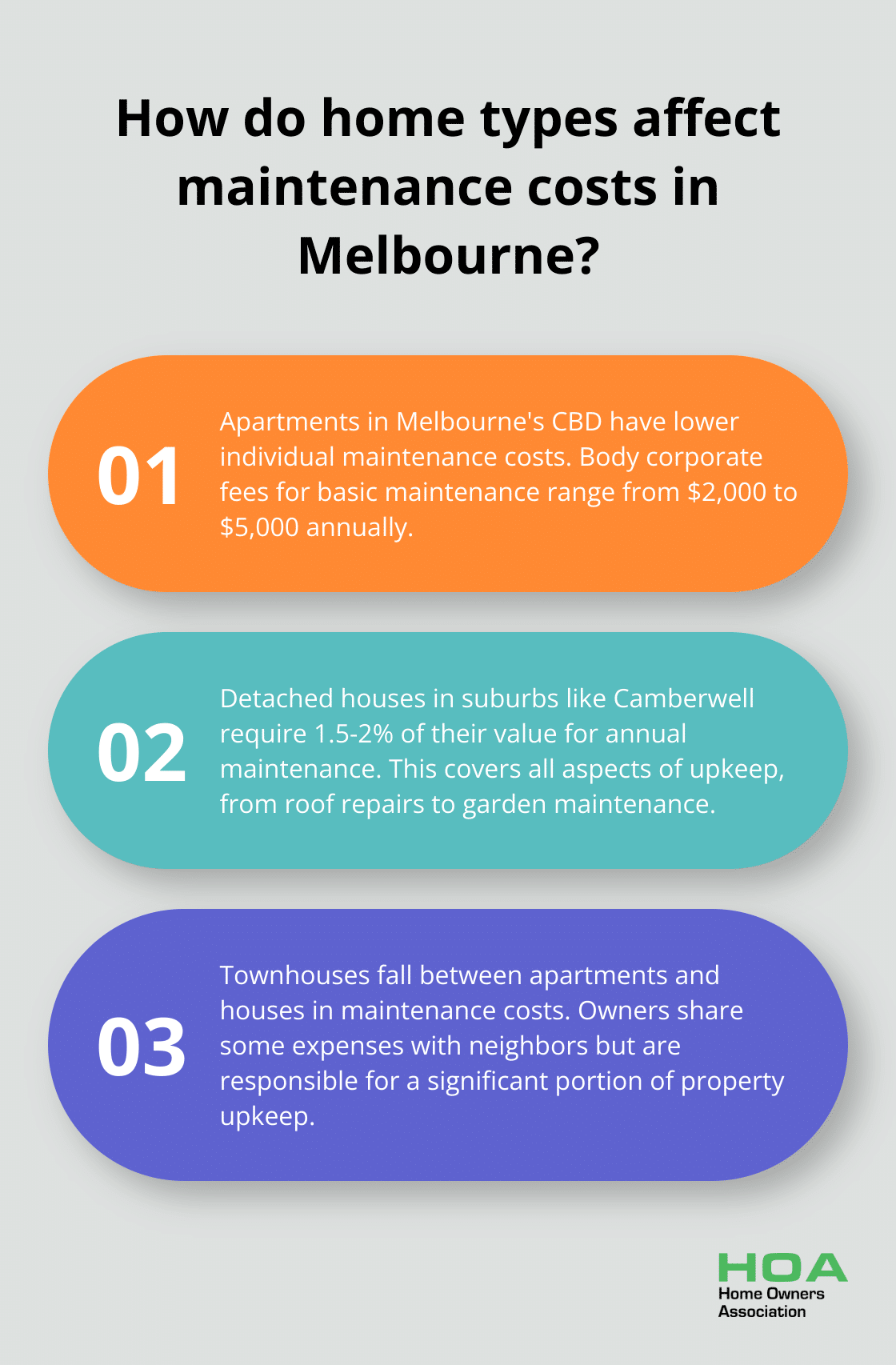
Homes built in the last decade typically have lower maintenance costs (often only about 0.5% to 1% of their value for annual upkeep). However, as your property ages, this percentage will likely increase. A 20-year-old home might need 2-3% of its value for yearly maintenance.
Melbourne’s Climate and Location Considerations
Melbourne’s unique climate, characterized by “four seasons in one day,” can take a toll on your home. The city’s unpredictable weather patterns, from scorching summers to chilly winters, accelerate wear and tear on exterior elements.
Coastal properties in areas like St Kilda or Brighton face additional challenges due to salt air corrosion. These homes might need more frequent repainting and rust prevention measures, potentially increasing maintenance costs by 20-30% compared to inland properties.
Homes in bushfire-prone areas around Melbourne’s outskirts (such as the Dandenong Ranges) need regular gutter cleaning and vegetation management to reduce fire risks. This can add an extra $500-$1,000 to your annual maintenance budget.
Type of Home and Its Impact
The type of property you own significantly affects maintenance costs. Apartments in Melbourne’s CBD or inner suburbs often have lower individual maintenance costs due to shared expenses through body corporate fees. However, these fees can range from $2,000 to $5,000 annually for basic maintenance in a standard apartment building.
Detached houses typically have higher maintenance costs as owners must handle all aspects of upkeep. A freestanding home in a suburb like Camberwell might require 1.5-2% of its value for annual maintenance, covering everything from roof repairs to garden upkeep.
Townhouses often fall between apartments and houses in terms of maintenance costs. While you might share some expenses with neighbors, you’re still responsible for a significant portion of your property’s upkeep.
Quality of Materials and Construction
The quality of your home’s original construction and materials used can significantly impact long-term maintenance costs. Homes built with premium materials and superior craftsmanship often have lower ongoing maintenance needs.
For example, a home with a high-quality metal roof might cost more initially but can last 50 years or more with minimal maintenance. In contrast, a cheaper tiled roof might need replacement after 20-25 years, costing upwards of $20,000.
Similarly, homes with double-glazed windows and proper insulation require less heating and cooling, reducing wear on HVAC systems and lowering energy bills. This investment can save you hundreds of dollars annually in both energy and maintenance costs.
Now that we’ve explored the factors influencing your home maintenance budget, let’s break down common maintenance costs and how to prioritize them effectively. A well-planned maintenance schedule can help you stay on top of necessary tasks and avoid unexpected breakdowns or repairs.
What Are Common Home Maintenance Costs in Melbourne?
Regular Maintenance Tasks and Their Costs
Melbourne homeowners face a variety of routine maintenance tasks. Gutter cleaning costs between $150 to $350 for an average-sized home, depending on factors such as size and complexity. We recommend cleaning gutters at least twice a year, particularly before storm season.
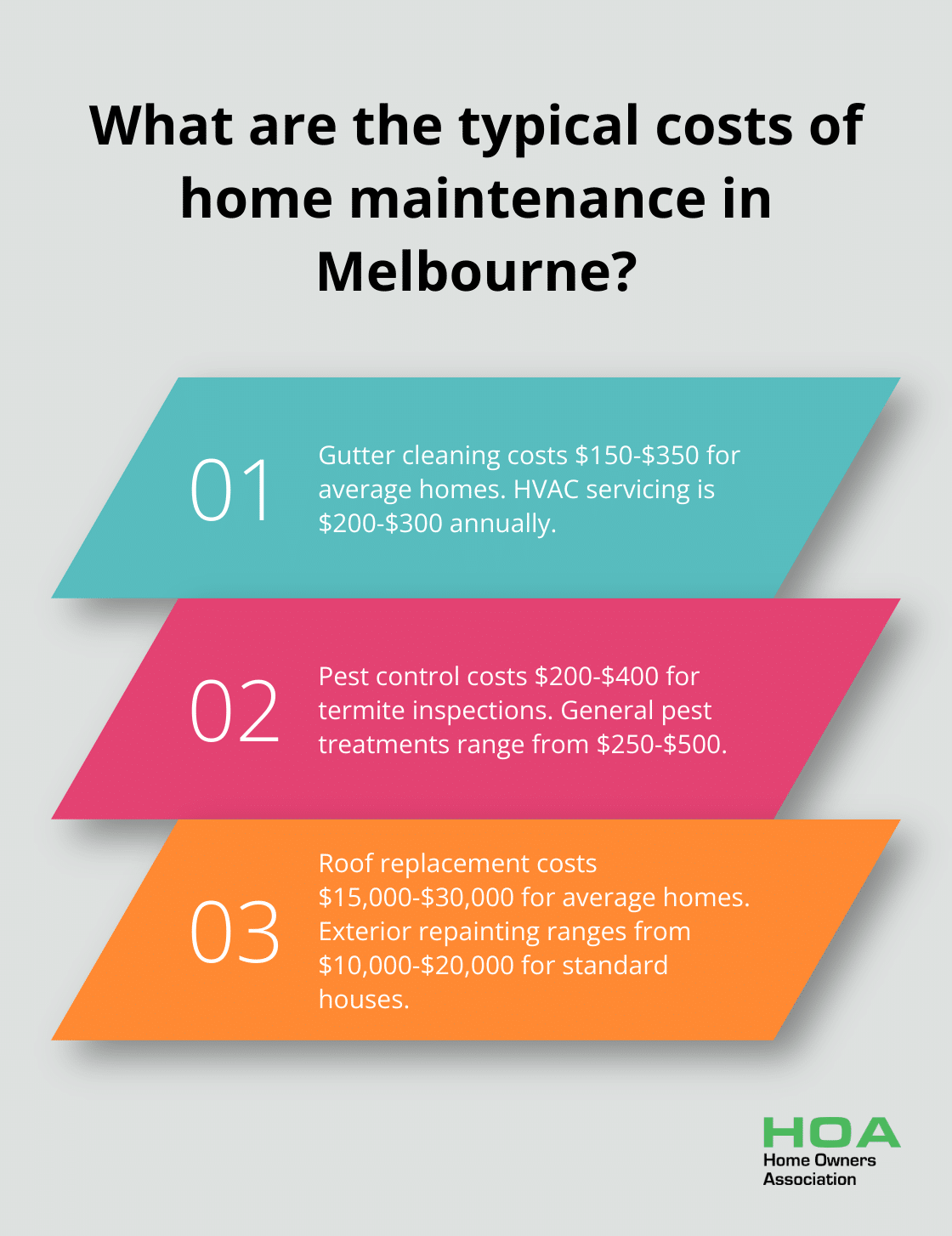
HVAC system servicing is another recurring expense. Melbourne’s variable climate necessitates annual servicing, which costs around $200 to $300. This maintenance helps prevent costly breakdowns and maintains system efficiency.
Pest control remains a common concern for Melbourne homeowners. Annual termite inspections cost approximately $200 to $400, while general pest treatments range from $250 to $500 (varying with property size and infestation level).
For garden upkeep, professional lawn care services in Melbourne suburbs charge about $50 to $100 per visit. This typically includes mowing, edging, and basic garden bed maintenance.
Planning for Major Repairs and Replacements
Major repairs can surprise homeowners financially. In Melbourne, roof replacement is a significant expense, with costs ranging from $15,000 to $30,000 for an average-sized home. Homeowners should start planning for replacement after 20-25 years.
Repainting the exterior of a Melbourne home is another substantial cost. Prices typically range from $10,000 to $20,000 for a standard three-bedroom house. This task should occur every 7-10 years to protect homes from harsh UV rays and variable weather.
Hot water system replacement is an additional major expense. In Melbourne, a new system can vary in cost. For example, a Rheem 170 litre External Gas Hot Water Heater System costs around $2,050 for supply and installation. These systems generally last 10-15 years, so factor this into your long-term budget.
Prioritizing Maintenance Tasks
When prioritizing maintenance tasks, focus first on issues that could lead to water damage or structural problems. In Melbourne’s climate, this means prioritizing roof repairs, gutter maintenance, and addressing any signs of rising damp or water ingress.
Next, consider tasks that impact energy efficiency, such as sealing drafts or updating insulation. These can lead to significant savings on heating and cooling costs, which are substantial in Melbourne’s variable climate.
Aesthetic improvements, while important for maintaining property value, should generally take lower priority unless they also serve a functional purpose.
We recommend creating a detailed maintenance schedule and setting aside funds each month for both routine tasks and future major repairs. This proactive approach can help Melbourne homeowners avoid financial strain and maintain their properties effectively in our unique urban environment.
Final Thoughts
Budgeting for home maintenance is essential for responsible homeownership in Melbourne. You should spend between 1% to 3% of your home’s value annually on maintenance, depending on factors like age, location, and property type. Proactive maintenance prevents minor issues from becoming major expenses and preserves your property’s value.
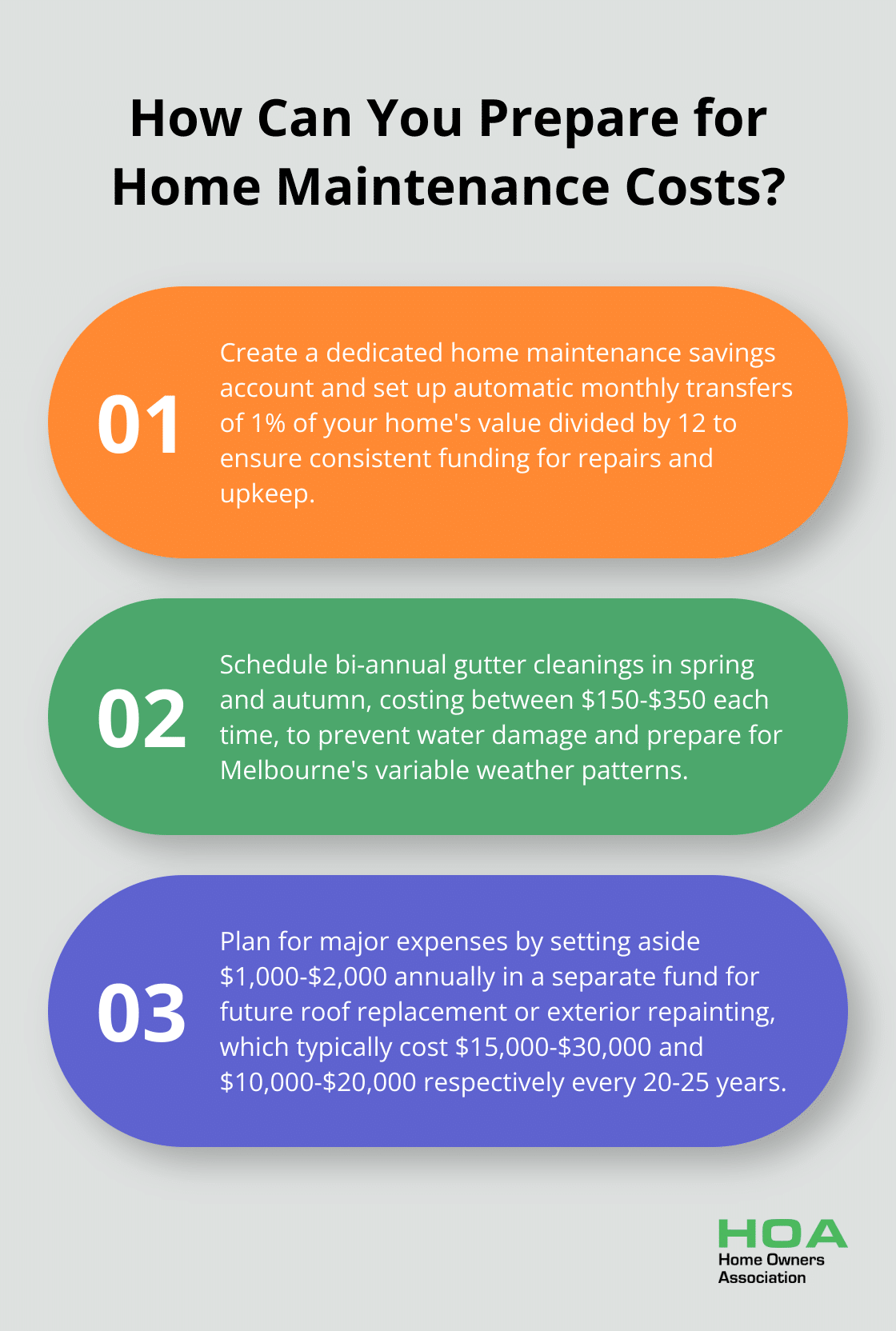
You can save money on home maintenance by learning basic DIY skills for simple tasks (always hire professionals for complex work). Regular inspections of your property will help you identify areas prone to wear and tear in Melbourne’s variable climate. Investing in quality materials and energy-efficient upgrades reduces long-term maintenance costs and utility bills.
The Home Owners Association offers expert advice and exclusive benefits tailored to Melbourne homeowners. We provide trade pricing, discounts on materials, and personalized guidance to help you navigate your home maintenance journey effectively. Our support enables you to make informed decisions and keep your home in top condition for years to come.




